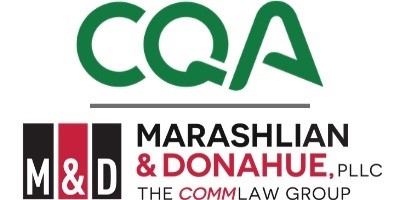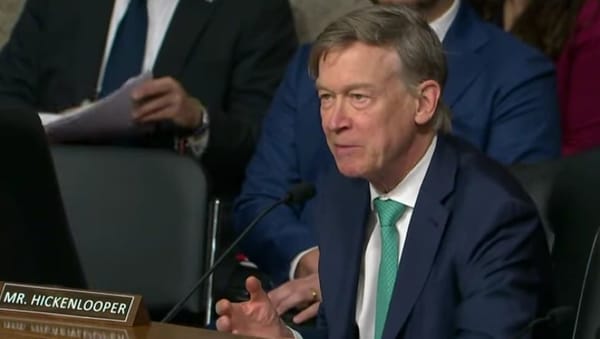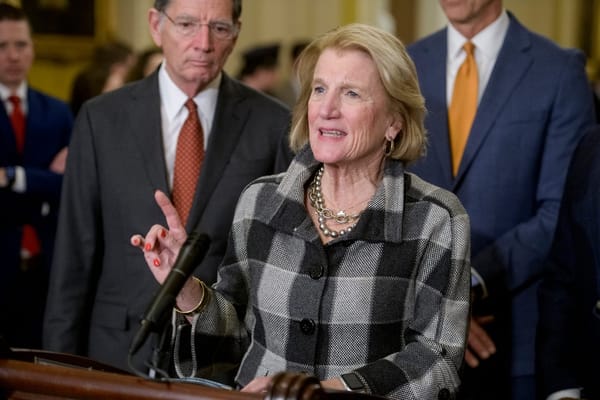Why the Rural Digital Opportunity Fund is So Significant, and How to Succeed in Applying For RDOF
TYSONS, Virginia, May 4, 2020 – The Rural Digital Opportunity Fund (“RDOF”) is a significant acceleration of the Federal Communications Commission’s efforts to subsidize the construction of broadband infrastructure in rural communities. The FCC has pledged to allocate $20.4 billion of support, over

TYSONS, Virginia, May 4, 2020 – The Rural Digital Opportunity Fund (“RDOF”) is a significant acceleration of the Federal Communications Commission’s efforts to subsidize the construction of broadband infrastructure in rural communities.
The FCC has pledged to allocate $20.4 billion of support, over 10 years, in two phases. That’s roughly $2 billion a year in broadband subsidies.
But the auction is a complicated process. Fortunately, on Tuesday, May 5, at 12 Noon ET, two knowledgeable organizations – the “broadband fabric” data and mapping experts at CostQuest Associates and attorneys from Marashlian & Donahue, PLLC, also known as The CommLaw Group – will explain what would-be bidders need to understand about RDOF in a FREE webinar, “How to Prepare and Effectively Bid in the Rural Digital Opportunity Fund Auction.”
The first phase of the FCC’s reverse-auction is expected to push out $16 billion (over 10 years), and is scheduled to begin on October 22, 2020. The second phase of the reverse-auction, of at least $4.4 billion (also over 10 years), would provide financial support for additional areas, including those locations unserved by phase one.
Here is how much of an acceleration RDOF represents over the Connect America Fund, Phase II (“CAF II”), the last FCC program to provide subsidies for rural broadband:
In 2018, CAF II offered $1.48 billion over 10 years, or $148 million a year in broadband subsidies. RDOF’s Phase I is expected be more than 10 times as large the widely-heralded CAF II auction.
Additionally, 713,176 locations – homes or offices – were funded through CAF II. RDOF’s Phase I is expected to provide support for nearly 6 million locations –more than eight times the number of locations in CAF II.
Laying the groundwork for a reverse-auction process
Bit by bit, the FCC has been laying the groundwork for this bonanza of funding. On August 1, 2019, the agency initiated a Notice of Proposed Rulemaking on the RDOF. On February 7, 2020, the agency released its Report and Order detailing the steps it will be taking in Phase I of the auction, as well as the reasoning behind those decisions.

On March 2, 2020, the FCC released a Public Notice with its proposed bidding procedures and program requirements for this phase of RDOF, which has been denominated as Auction 904. An initial map of 5,907,896 locations – within about 66,000 census block groups – was released on March 17, 2020. Final reply comments on the bidding procedure were due on April 10, 2020, and the FCC is soon expected to finalize those procedures and release a timeline for the auction.
Organizations seeking to bid in RDOF will want to understand those details. But to be successful, they should also have a broader understand the context and requirements necessary.
Few are better situated to facilitate that understanding than CostQuest Associates – which was contracted by the FCC to design the Cost Allocation Model (CAM) that undergirded the CAF II auction, and also the RDOF auction – and attorneys from The CommLaw Group, who have helped hundreds of companies comply with the FCC’s broadband, telecommunications and auction requirements.
Register for FREE for “How to Prepare and Effectively Bid in the Rural Digital Opportunity Fund Auction,” on Tuesday, May 5, 2020, at 12 Noon ET.
The CostQuest / CommLaw Group webinar will be followed on the same day at 4 p.m. ET by a Federal Communications Commission webinar on RDOF. Attending the CostQuest / CommLaw Group webinar will better prepare potential bidders for the FCC webinar and for the FCC auction.
Short forms, long forms, and a brief description of the reverse-auction process
The FCC’s “Fact Sheet” on Auction 904, the first phase of RDOF, has an extremely bare-bones description of the timeline and deadlines. Once auction procedures are officially adopted and eligible census block group areas are finalized, the agency will open the window for the filing of “short form” application with basic information about the broadband providers’ proposed service. Filling this out is a prerequisite for bidding in RDOF’ first phase.
As is normal for its auctions, the agency will conduct a “mock auction” before the actual auction to familiarize would-be bidders on what takes place in an FCC auction or reverse-auction.
Bidding is scheduled to begin on October 22, 2020, and is expected to last for several weeks. There has been some pressure on the FCC to delay the auction because of the coronavirus pandemic. By the same token, others have pressed the agency to accelerate the auction to get more broadband funding to help cope with the pandemic. Agency-watchers expect the FCC to stick with its current schedule.
Following the conclusion of the auction, winning bidders submit what is a called a “long form” application. For funds to then be disbursed to winning bidders, this long form must include additional regulatory details, including proof of Eligible Telecommunication Carrier status for RDOF winners.
The FCC is expected to provide more details on the actual short form deadlines, as well as the mock auction, at the agency’s webinar at 4 p.m. ET on Tuesday, May 5. The CostQuest/CommLaw Group webinar will preview these requirements and give greater insight into how these different RDOF elements needs to fit together.
Differences between CAF II and RDOF, Phase I
The February 7 order governing the first phase of the RDOF auction builds upon the processes used in the CAF II auction, the agency’s first auction to award ongoing high-cost universal service support through competitive bidding in a multiple-round reverse auction. Unlike a spectrum auction, a this auction is a “reverse auction” because bidders are seeking money to offer services, and the winner is the one who offers to provide the service at the lowest price, weighted again service tiers and other conditions.
Perhaps this prior success at such a reverse auction has given the FCC the confidence to put rules in place for shoveling $16 billion — more than 10 times the amount of funds in CAF II –in just the first phase of RDOF.
Notwithstanding, the FCC did make some changes from the CAF II process. In addition to the increased funds, the FCC has raised the required minimum supported speed from 10 Megabits per second (Mbps) download / 1 Mbps upload in CAF II, to 25 Mbps / 3 Mbps in RDOF Phase I.
Additionally, the FCC has changed the tiers and the latency weights that it gives to particular broadband technologies. This is designed to “implement a framework that prioritizes faster broadband speeds of up to a gigabit per second,” according to the FCC’s February 7 order.
Understanding the “weights” associated with particular tiers of speeds and latency requirements (called “T +L” in the FCC’s proposed bidding procedures) is crucial to unlocking what is going on, and what proposed bidders will need to understand to be successful. This will be discussed in the CostQuest / COmmLaw Group webinar. Register for FREE for “How to Prepare and Effectively Bid in the Rural Digital Opportunity Fund Auction,” on Tuesday, May 5, 2020, at 12 Noon ET.
A controversy over mapping lingers in the background of RDOF
An additional controversy surrounding the first phase of RDOF is worth noting. It concerns the issue of broadband maps.
The FCC requires broadband providers to submit deployment data on its Form 477. Such data is collected within a nesting-doll framework of geographies called the FIPS Code, or the Federal Information Processing Specification. These codes include ID numbers for states, counties, census tracts (66,438 in United States), census block groups (211,267), and census blocks (11,155,486). The census block is the smallest unit of geography the U.S. government recognizes.
These geographical units don’t mesh well with broadband providers’ mapping service areas. Wireline providers use line drawings. The wireless industry employs radio frequency engineers to create propagation maps with polygons that predict coverage areas based on distance from towers. Both mapping techniques create shapefiles that can overlap with census geography and estimate which census blocks are covered.
However, if a census block is considered “covered” when only one person within that block can get broadband, that overcounts broadband availability. The average population of a census block is 30, but census blocks are defined by geographic boundaries, not by population. Blocks can be quite small in urban and suburban areas but hundreds of square miles in rural and remote areas.
Getting at the blocks that are partially served has been at the heart of the controversy over improving broadband mapping. In part to begin to resolve the question of measuring and mapping broadband locations better, in August 2019 – during the same meeting at which the FCC proposed the RDOF – the FCC proposed the creation of a new and more granular broadband map called the Digital Opportunity Data Collection (“DODC”).
This new and theoretically improved DODC has not yet been finalized, and the Democratic commissioners on the FCC have urged that that DODC should be completed before RDOF funds are awarded. But agency Chairman Ajit Pai instead proposed that RDOF be split into two phases.
The first phase – the $16 billion phase current the subject of Auction 904 – will only award funds for location in census blocks completely unserved by 25 Mbps/3 Mbps broadband.
As stated in the order, “Phase I will target those areas that current data confirm are wholly unserved; and, Phase II will target unserved locations within areas that data demonstrates are only partially served, as well as any areas not won in Phase I. By relying on a two-phase process, we can move expeditiously to commence an auction in 2020 for those areas we already know with certainty are currently unnerved, while also ensuring that other areas are not left behind by holding a second auction once we have identified any additional unnerved location through improvements to our broadband deployment data collection.” The order then footnotes to the DODC proposal.
The FCC has adopted Chairman Pai’s proposal, and so the nearly 6 million locations available for support in Phase I deliberately exclude locations within census blocks that are “partially served,” meaning that if one customer in a neighborhood can get broadband, that neighborhood may still be excluded from RDOF’s Phase I.
Why understanding the Cost Allocation Model is crucial to success
Reviewing the FCC’s map of initial eligible areas, released March 17, 2020, is a good place to start to understand costs of service, and how those costs interact with the cost allocation model. Doing so will be crucial to success in the RDOF. Think of this FCC map as the map of a donut hole: It is demonstrating precisely those areas in which broadband is not.
Therefore, these maps and accompanying datasets highlight the 66,000 census block groups that are likely to be eligible for service through RDOF Phase I. (A “challenge process” will allow broadband providers to attempt to knock out census block group from subsidized coverage if they can prove that they already offer service at 25 Mbps / 3 Mbps.)
These FCC maps include color-coded information about the number of eligible locations within each census block group, as well as the “annual reserve price” at which a block group will be subsidized.
Here, a little background is in order. In the early 2010s, as part of a years-long effort to transition universal service fund support, the FCC contracted to develop a Connect America Cost Model (“CAM”). Who developed this model for the FCC? CostQuest Associates.
The model that ended up being codified by the FCC in 2015 defined the costs at which subsidies would be granted. Incumbent local exchange carriers, known as “price cap carriers,” were given the opportunity to accept financial subsidies based upon the model, in exchange for offering 10 Mbps / 1 Mbps service by 2020.
As the FCC recounts in its February 7 order, “In areas where price cap carriers declined the model-based support…, support was to be allocated through the subsequent CAF Phase II auction, a competitive bidding process in which all eligible providers were given an equal opportunity to compete. The auction yielded 103 winning bidders… in 45 states.”
The “reserve price” listed on the FCC’s map shows the price, for each census block group, that the CAM uses to calculate the estimated cost, per household per month, to bring broadband to the average location in that census block group.
FCC regulation (specifically 47 CFR 1.21003(c)) gives the FCC the discretion to establish reserve prices prior to the auction. In CAF II, the FCC had set the minimum support threshold at $52.50 per location, with a per-location support cap of $146.10.
For RDOF Phase I, the FCC has lowered the minimum support threshold to $40.00 per location (or $30.00 per Tribal location), with a per-location support capped at $212.50 per household per month. In addition to potentially offering bidders the ability to bid on 66,000 census block groups (versus 33,000 in CAF II), the significantly wider range in reserve price availability is another reason why the funding in RDOF Phase I is certain to dwarf CAF II.
Since its work for the FCC in the creation of the CAM, for more than a year CostQuest Associates has developed what it calls a “broadband serviceable location fabric,” and which provides a foundation for broadband providers to understand how individual service locations geolocate within census blocks and census block groups.
The uses to which CostQuest data can be put in an RDOF application will be discussed on the webinar, together with an assessment of how broadband data should be used in preparing, assessing and complying with the terms of an RDOF grant.
To register for the webinar, please visit “How to Prepare and Effectively Bid in the Rural Digital Opportunity Fund Auction” to secure your spot on Tuesday, May 5, 2020 at 12 Noon ET.
Author Drew Clark, the Editor of Publisher of Broadband Breakfast, is also a telecommunications attorney at Marashlian & Donahue, PLLC, The CommLaw Group. Clark served as executive director of the Partnership for a Connected Illinois, the State Broadband Initiative in the land of Lincoln. PCI engaged in broadband mapping and planning, infrastructure investment, and digital literacy training.
For more than a decade, Clark has been one of country’s leading voices advocating for improved broadband mapping efforts and a rational geospatial system for collecting broadband data. The CommLaw Group and its sister company, The Commpliance Group, have helped hundreds of companies comply with the Form 477 and other FCC requirements. See Clark’s article, “Broadband Maps Are a Mess, So Now Let’s Focus on Actually Improving Them,” from July 2019. Also see “CostQuest and The CommLaw Group Join to Host Fine-Grained Webinar on Rural Digital Opportunity Fund,” from April 14, 2020.










Member discussion